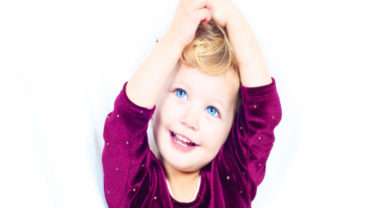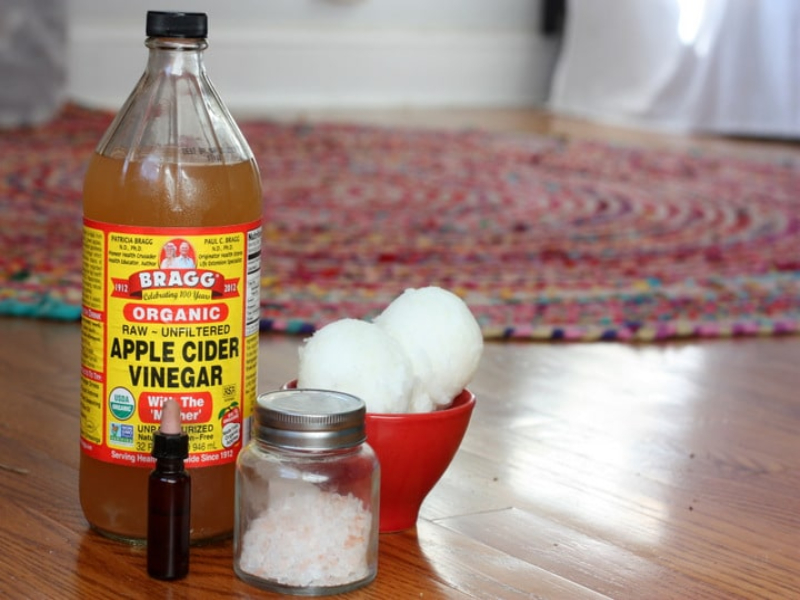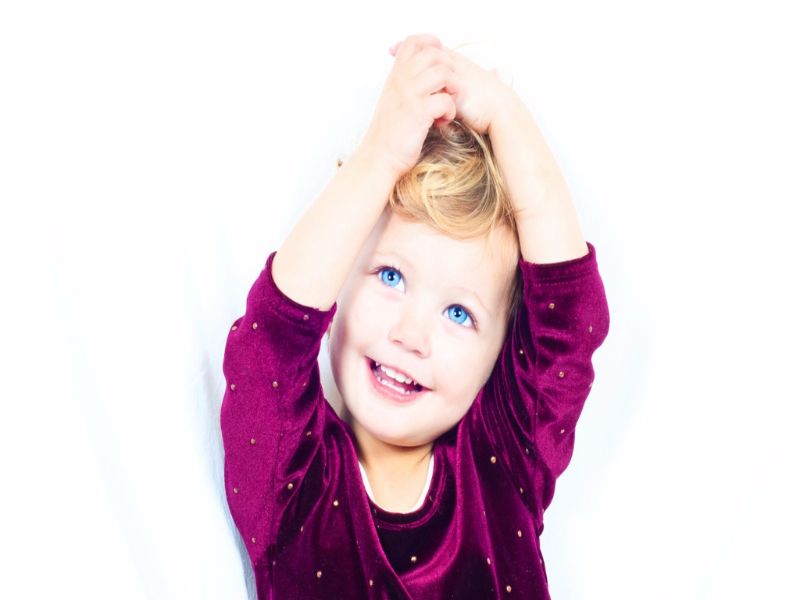Via Mommypotamus: Natural Remedies For Lice
Have you ever noticed how motherhood…
Has a way of making you feel guilty about random things, like going to the bathroom by yourself? Well, here’s one thing you shouldn’t add to your list: lice.
If your little one gets it, it’s not because they were dirty . . . though it’s probably a good thing if they are sometimes. It’s also not because your house is dirty, though if you’re like me there are days when you have to clear a path through the rubble, er, toys, just to get to your couch.
Lice thrive in clean hair, dirty hair, blue hair and even weird beard hair. Fortunately for us, they don’t do well in the environment if separated from us, so preventing a reinfestation is relatively easy with a little know-how. But I’m getting ahead of myself – I haven’t even covered how to get rid of them in the first place. I’ll get to that in a moment – but first, let’s talk about what not to do . . .
CONVENTIONAL LICE TREATMENTS ARE WORSE THAN WE THOUGHT
If you’re like me, you remember being doused with a foul, tar-like shampoo after a wave of lice hit your local elementary. For even the natural mamas among us, it’s easy to think that this might be the time to bring out the big guns. Who wants to fight this stuff for weeks, right?
But before you lather up with OTC options like Nix, Rid, A-200 and Pronto or a prescription variety like Ovide or Kwell, “you might want to know what’s in it,” says Melanie Haiken of Takepart. Yes, yes you do. Here’s more from her article:
“The answer: neurotoxins, which kill lice by attacking the central nervous system. Rid, Pronto, and A-200 contain pyrethrins, and Nix contains permethrin, all used in common garden pesticides. Ovide contains an even stronger neurotoxin, malathion. (Yes, that’s the same pesticide many communities banned a decade ago.)
Needless to say, these pesticides aren’t something you’d normally want to expose your kids to. Pyrethrin exposure has been linked to asthma and other breathing problems in children, as well as skin rashes. They’re also probable endocrine disruptors and may raise breast cancer risk by elevating estrogen levels. Lindane, the oldest neurotoxin used for lice treatment and the active ingredient in Kwell, has been banned in 52 countries and restricted in 33 others for causing serious side effects, including seizures, stiff neck, lethargy, and slurred speech.”
AND GET THIS, THEY DON’T EVEN WORK
You see, lice are super these days. And by super I don’t mean awesome, I mean resistant to pesticides.
“The manufacturers won’t tell you that, and your child’s doctor probably won’t either,” writes Haiken. “But research published this spring in the Journal of Medical Entomology revealed that 99.6 percent of the lice found in the United States are ‘super lice’ resistant to pyrethrins and permethrin. It makes sense: Just as bacteria mutate to make an end run around an antibiotic, so too do fast-reproducing head lice, which mutate to survive the neurotoxic onslaught.”
Yikes. If you’re scratching your head about what to do instead, I have a few suggestions.
NATURAL REMEDIES FOR LICE
There are four basic ways to get rid of lice:
1. Physical removal with a nit comb
Professional “nitpickers” most often use the Nit Free Terminator Lice Comb to remove lice and nits (lice eggs). We’ll cover how to use it with other remedies in the section below.
2. Suffocation
One study found that coating the hair/scalp with a blend of mineral oil and other chemicals to suffocate the lice was 97.6% effective. Personally, I wouldn’t use mineral oil, polysorbate 80, etc., but I would definitely try oils such as coconut or olive. Many parents have reported great success with this method. However, because the little buggers “can hold their breath for up to 8 hours,” you’ll need to put on a shower cap and let the oil sit overnight. And because nits don’t die from suffocation, you’ll have to repeat the process or comb them out. (source)
3. Pesticides
As I mentioned earlier, about 99% of the lice found in the U.S. are resistant to one or more pesticides. For that reason – and because they’re likely to be toxic – I wouldn’t use most store bought or prescription treatments. However, the study I mentioned in #2 that examined the suffocation method also found that that botanical pesticides – also known as essential oils – seem to be very effective at killing lice. More on that below.
4. Degreasers
Certain enzyme soaps and substances like diatomaceous earth actually break down the exoskeletons of lice. More on that below.
OPTION 1: THE NIT COMB
In the video below, a professional “nitpicker” walks you through effective combing techniques for removing lice and nits.
Quick note: I personally would probably use coconut oil or olive oil instead of cream conditioner.
Pros: No toxins and it’s very affordable. (About $11)
Cons: You cannot miss even one egg, otherwise you’ll have another outbreak. Personally, I think this method is most effective if used in combination with one of the others below.
OPTION 2: APPLE CIDER VINEGAR + COCONUT OIL
In this method, you first rinse the hair with apple cider vinegar to loosen the glue that holds the nits in place. Allow the vinegar to sit until the hair is fully dry, then coat the scalp and hair completely with coconut or olive oil to suffocate the lice. Pull all the hair into a shower cap and let the oil sit for at least eight hours. Remember, the little buggers can hold their breath for a long time.
When the time is up, you have the option of either shampooing to remove the oil, or combing the hair with a nit comb and then washing. You may need to shampoo more than once to get all the oil out. Make sure to wash and dry all the towels and clean out your comb. Also throw any sheets/pillowcases that have been slept on in the dryer for 20 minutes.
Pros: It’s non-toxic, and your hair will be exceptionally well-conditioned when the process is over.
Cons: Suffocation will kill the active lice, but it doesn’t affect nits, so you have to do it once per week for three weeks. This works because lice don’t lay eggs until they are about 10 days old, so if you treat every 7 days you’re eliminating their ability to reproduce. After the initial treatment, two more treatments spaced a week apart should do the trick. Just make sure to put pillowcases, sheets, towels, etc. in the dryer for 20 minutes after each use.
OPTION 3: ENZYME BASED SOAPS + NIT COMB
Some newer products use enzyme-based soaps that break down the exoskeleton of lice and kill nits. Certain products, such as Lice B Gone, are marketed specifically for lice.
Another option I’ve heard mentioned is diatomaceous earth. However, because it will dry out the scalp and hair – possibly to the point of making it brittle – I would only use it as a last resort. And even then, I’d take care to apply it to the scalp area and hair immediately surrounding the scalp instead of all of my hair.
Pros: Non-toxic and, in many cases, only one application is needed.
Cons: You may need to order the products if you can’t find them locally, and who wants to wait?
OPTION #4: SALT & VINEGAR + OIL
Salt and vinegar may work together to dehydrate and kill lice/nits. (source 1, source 2) To use, apply as a spray (1/4 cup salt dissolved in 1/4 cup warm vinegar) until the scalp/hair is wet. Allow the mixture to sit until the hair is fully dry, then coat the scalp and hair completely with coconut or olive oil. At this point, you can either leave it on for eight hours to suffocate and remaining living lice, or you can comb out the lice that have died from the saltwater solution immediately.
After combing, wash with shampoo as many times as needed to remove the oil, then wash and dry all the towels and clean out your comb. Also throw any sheets/pillowcases that have been slept on in the dryer for 20 minutes.
Pros: It’s non-toxic and may be faster than than the suffocation method (or you can use the two together).
Cons: There isn’t any formal research that backs this method, only stories from parents. However, it may be worth a shot.
OPTION #5: NATURAL PESTICIDES
In one study, a lotion that included 10% tea tree and 1% lavender oil was 97.6% effective in eliminating lice, while insecticides like pyrethrins and piperonyl butoxide were only 25% effective. If I were to try to use a similar method at home, I would put 20 drops of tea tree oil in 2 teaspoons of shampoo, lather and let sit for 15 minutes, then rinse and comb with a nit comb.
Another study found that neem oil shampoo was very effective at killing both lice and nits, but I was unable to find any information regarding the concentration that was used. I did look around for general safety info regarding neem oil. Many sources say it should not be taken internally by children, but I found few references regarding topical use. One company suggested it should not be used in children under two “as a precautionary measure.” I also learned that children should never be given neem while sick because it contains a compound similar to aspirin that can trigger Reyes’ Syndrome.
So, you may be thinking . . .
OKAY, I’M GOING TO TRY ONE OF THESE. WHAT ELSE SHOULD I DO?
Remember that with any of these methods, you need to immediately toss sheets, pillowcases and towels in the dryer for 20 minutes after use in order to kill any stragglers.




